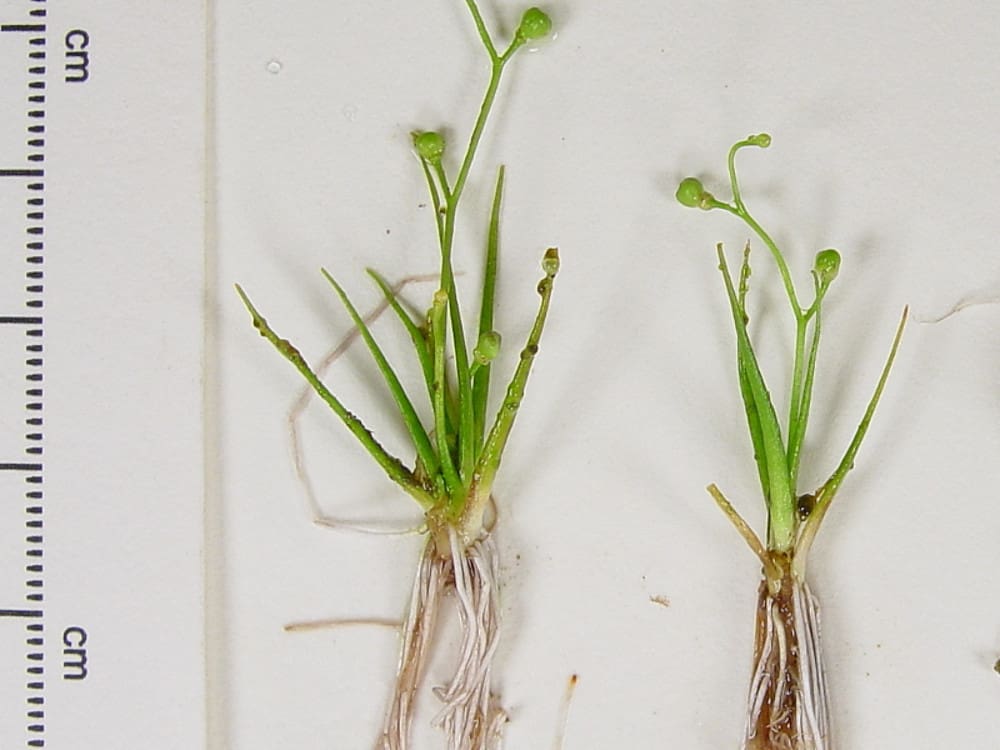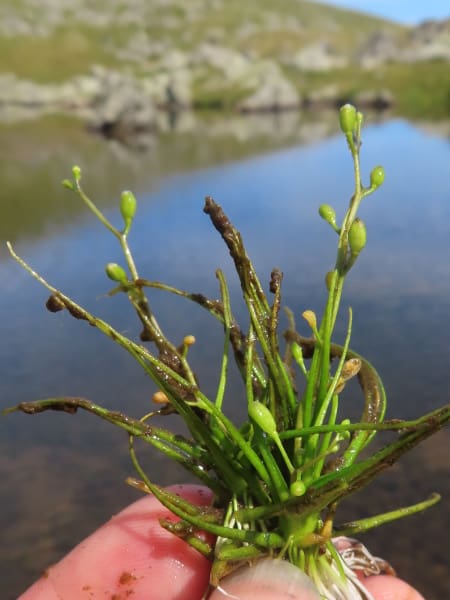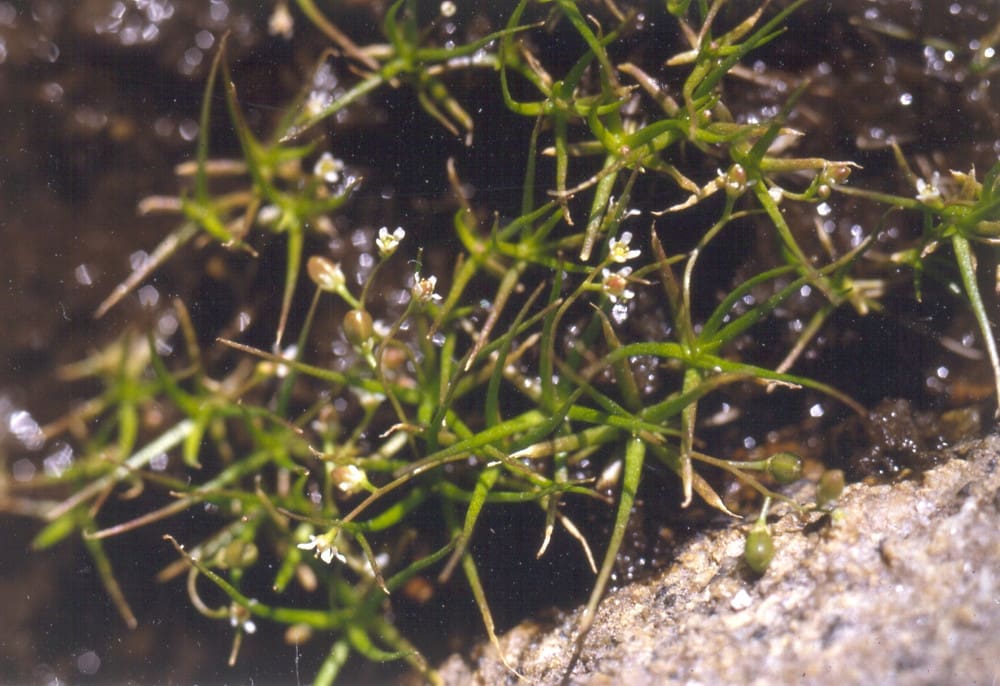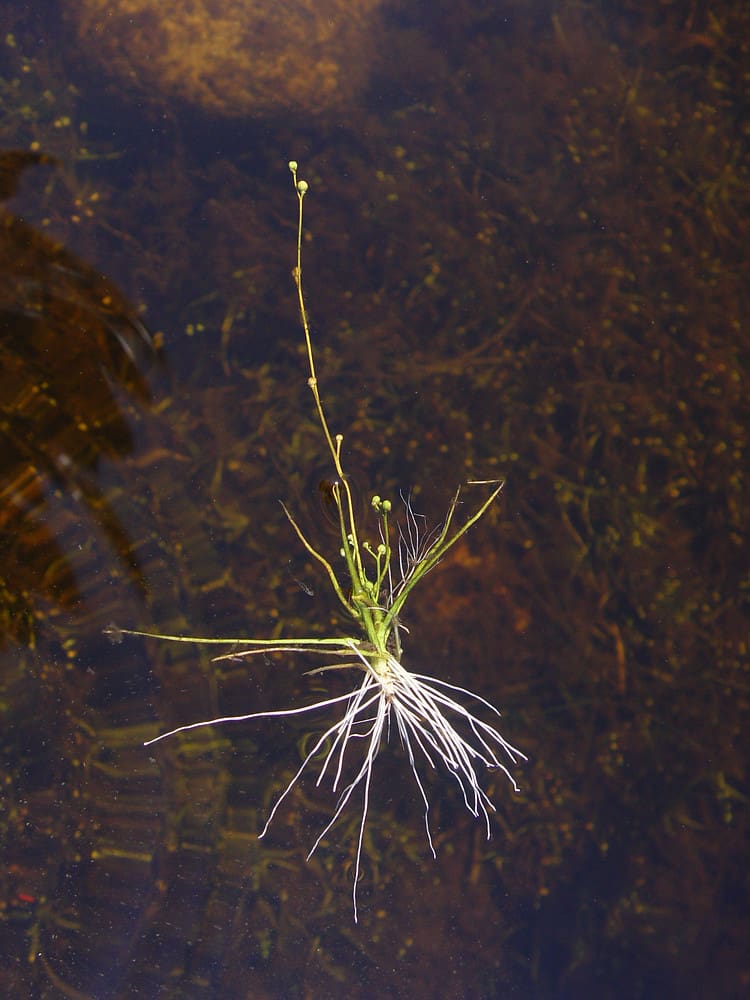In the mysterious realm of hydrobiology, the organism known as Subularia Aquatica often goes unnoticed. However, this seemingly unassuming aquatic weed plays a significant role in the health and stability of waterbodies worldwide. In the forthcoming article, you are invited to join the exploration of the characteristics, habitat, and ecological significance of this particular plant, commonly referred to as Subularia Aquatica. You will be provided a comprehensive narrative detailing its life cycle, distribution, and the potential threats it poses to both human and wildlife populations. The information presented will not only deepen your understanding of this underwater flora but also equip you with relevant knowledge for potential conservation efforts.

General Overview of Subularia Aquatica
Subularia aquatica is a plant species belonging to the Brassicaceae family, often found in water bodies and wetland habitats. Recognized for its aquatic nature, it is part of a fascinating set of plants adapted to waterlogged living conditions, thereby earning its description as an ‘aquatic weed.’
Taxonomical Classification
You can identify Subularia aquatica from a taxonomical perspective within the Kingdom Plantae, classified under the dicot class. It belongs to the order Brassicales, which situates it within the Brassicaceae family and the Subularia genus. Within the Brassicaceae family, Subularia aquatica holds its own charm with unique characteristics that set it apart from its relatives.
Common Names and Synonyms
In common English parlance, you may also find this aquatic weed referred to as ‘water awlwort.’ As this is a scientific name, the species does not carry any known synonyms outside of Subularia aquatica.
Distribution and Habitat
The distribution of Subularia aquatica is widespread, mostly in Northern Hemisphere regions, encapsulating Europe, Africa, and North America. It has been recorded in higher altitudes up to montane levels, but generally prefers fresh, temperate waters. Its typical habitat encompasses marshy lands, shallow pond margins, and lake shores, underlining its adaptability to both submerged and free-floating states.
Morphological Characteristics of Subularia Aquatica
Subularia aquatica is unique in its morphological features, which are all the more important from a botanical and ecological perspective considering its aquatic habitat.
Plant Size and Shape
You would typically observe the Subularia aquatica plant grow to a size of about 10 cm. It assumes a linear, somewhat erect form, clearly structured to ensure optimal light capture, critical for its photosynthetic activity in the often murky watery environments.
Leaf Characteristics
The leaves of Subularia aquatica are opposite, sessile, and lanceolate to linear in shape. They are generally without a petiole, coarsely toothed but can also appear entire and somewhat submersed. They typically measure up to 1.5 cm in length, providing much-needed surface area for nutrient absorption and oxygen exchange.
Flower Characteristics
The flowering characteristic of Subularia aquatica is quite striking. It blooms tiny, actinomorphic, and four-petaled white flowers which are cross-shaped – a classic trait of the Brassicaceae family. The flowers are incredibly small, making it a challenge to view without specialized optical aids.
Seed and Fruit Characteristics
Subularia aquatica’s fruit is a distinctive heart-shaped silicle which stands out clearly against the typically linear form of the plant. Each fruit contains numerous tiny light brown seeds which can remain viable for a long time, aiding in the plant’s proliferation.

Growth and Development of Subularia Aquatica
The growth and development of Subularia aquatica is an intriguing affair, given its unusual route of evolution to adapt to aquatic living conditions.
Life Cycle and Growth Rate
Subularia aquatica is an annual herbaceous plant, indicating a life cycle that lasts for a year. Its fast growth rate allows it to capitalize on favorable seasonal conditions.
Seasonal Changes in Appearance
The appearance of Subularia aquatica changes subtly across seasons, with a clear progression from flowering during summer to the development of its distinctive heart-shaped fruit in autumn.
Ecological Role of Subularia Aquatica
Despite its discreet existence, the ecological role of Subularia aquatica is not to be underestimated. It interacts with other aquatic species and contributes to aquatic ecosystems, thereby playing a crucial ecological role.
Interactions with Other Aquatic Species
Subularia aquatica provides food and shelter to various aquatic organisms, and its flowers attract pollinators. This interaction can lead to mutual benefits, thereby fortifying the ecosystem’s overall health.
Contribution to Aquatic Ecosystems
Aside from being a food source, Subularia aquatica contributes to the aquatic ecosystem by stabilizing the soil at the water’s edge. This further prevents soil erosion and maintains the integrity of the water body.

Distinguishing Features of Subularia Aquatica
Despite having a multitude of similar species in water bodies, Subularia aquatica stands out, thanks to its unique set of features.
Comparison with Similar Aquatic Weeds
Against other aquatic weed species, Subularia aquatica’s distinguishing feature rests in its cross-shaped actinomorphic flowers, linear body shape, and unique heart-shaped fruit. These distinctions provide visual clues for Subularia aquatica identification.
Key Identifying Traits
Key identifying traits for Subularia aquatica include its distinctive all-white flowers, heart-shaped fruit, and alternate leaf arrangement. These traits make Subularia aquatica quite sui generis among many other aquatic weed species.
Potential Uses of Subularia Aquatica
Like many weed species, Subularia aquatica has the potential for several uses within different applications.
Medicinal Applications
While direct medicinal applications of Subularia aquatica are yet to be extensively researched, many members of the Brassicaceae family have pharmacological uses. As such, potential uses within this context for Subularia aquatica could be anticipated.
Use in Aquatic Landscaping
Subularia aquatica’s distinct appearance and growth habit offer a creative touch to aquatic landscaping. Its submerged growth can add depth and intrigue to aquariums or garden ponds.
Potential as Biomass for Energy Production
Given its rapid growth and favourable habitat conditions, Subularia aquatica could serve as a sustainable source of biomass for energy production, although further investigation would be needed to confirm this possibility.

Challenges Posed by Subularia Aquatica
While it offers potential benefits, Subularia aquatica also poses challenges, being an aquatic weed, particularly impacting native species and aquatic navigation.
Impact on Native Species and Biodiversity
As an invasive aquatic plant, Subularia aquatica can potentially crowd out native species and alter water chemistry, threatening local biodiversity.
Problems for Aquatic Navigation and Fishing
Dense growths of Subularia aquatica may congest waterways and hinder navigation and fishing activities by impeding the movement of boats and entangling fishing gears.
Management and Control of Subularia Aquatica
Effectively managing and controlling Subularia aquatica involves various strategies, from physical removal, chemical control, to biological options.
Physical Removal Methods
One effective method is physical removal, where these weeds are manually or mechanically extracted from the water bodies. This control method is particularly effective in small ponds or bodies of water, where Subularia aquatica growth is manageable.
Chemical Control Strategies
Herbicides can be used to manage and control Subularia aquatica; however, careful usage is recommended. Consultation with local environmental or agricultural extension services would be beneficial to ensure proper application and minimal impact on other, non-target species.
Biological Control Options
Biological control involves introducing species that naturally feed on Subularia aquatica as a control strategy. However, successful biological control requires careful study and implementation, as introducing non-native species to control the weed can sometimes have adverse unintended consequences.

Current Research on Subularia Aquatica
Research on Subularia aquatica is ongoing, with areas of examination ranging from genetic studies and taxonomy, ecological impact to uses and potential applications.
Genetic Studies and Taxonomy
Subularia aquatica is subject to genetic studies aimed at understanding its evolutionary dynamics. Taxonomy based research aids to elucidate its place within the Brassicaceae family and distinguish it efficiently from similar species.
Ecological Impact
Research is also focused on discerning the ecological impact of Subularia aquatica, especially considering it as an aquatic weed and how it interacts with other biota and the environment.
Uses and Potential Applications
Studies on potential applications of Subularia aquatica from a medical, environmental, and energy standpoint, provide exciting avenues for future explorations.
Further Knowledge and Information on Subularia Aquatica
Your learning journey on Subularia aquatica does not end here. There are other recommended sources of knowledge involving societies and organizations focusing on aquatic weeds that offer more insights.
Recommended Sources for More Information
While specific books or papers on Subularia aquatica may be scarce, botanical textbooks and field guides offer relevant content. Likewise, various botanical journals and databases are excellent information sources, and your local libraries should provide a wealth of research material related to aquatic plants.
Societies and Organizations focused on Aquatic Weeds
Societies and organizations working to manage and study aquatic weeds could provide further insights, practical experiences, and the latest research related to Subularia aquatica. Such groups are often receptive to inquisitive minds looking for more information or keen on making a difference in our understanding and management of such species.
In conclusion, Subularia aquatica, though generally termed an ‘aquatic weed,’ has enormous ecological significance and potential uses beyond first glance. With ongoing research and a broader understanding, this humble species might just surprise us with more interesting revelations.